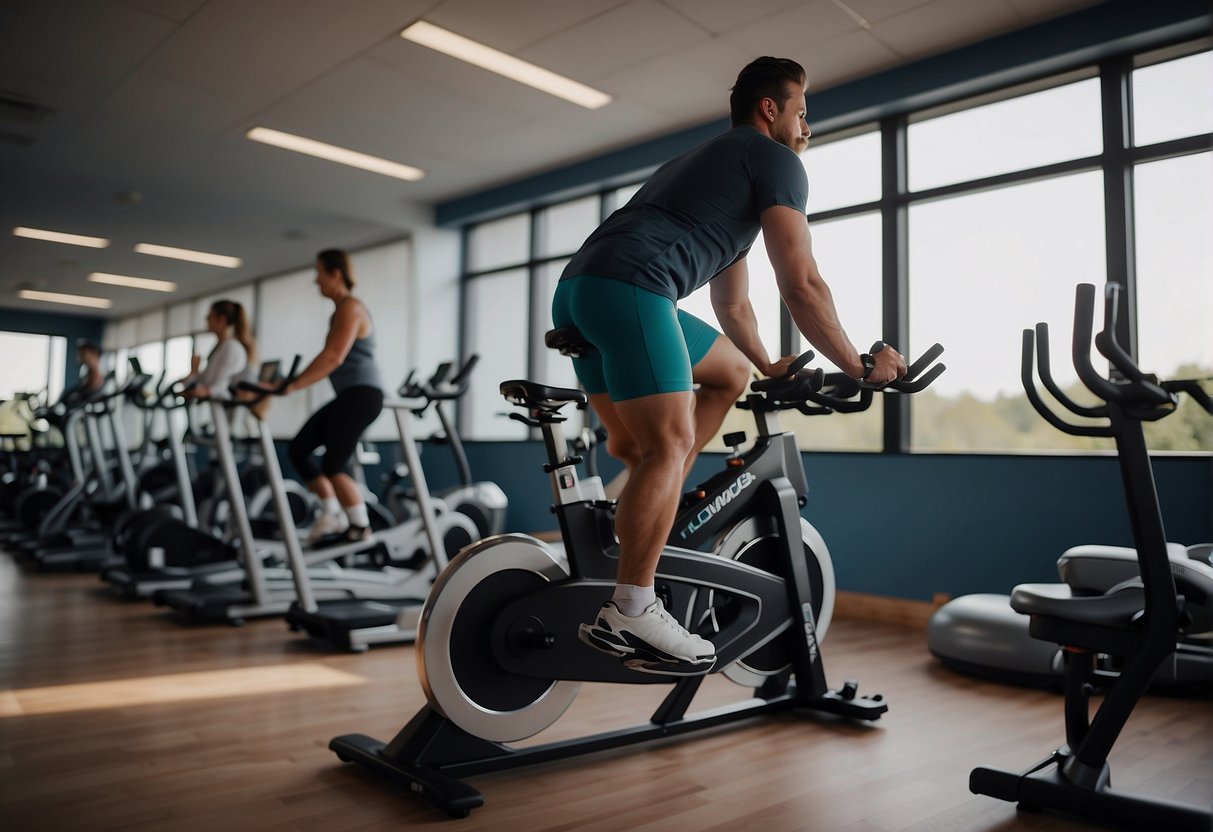📦 FREE Shipping
Is Cycling Good for Gluteal Tendinopathy 2024? Experts Explain

Managing gluteal tendinopathy requires a careful approach to exercise. “Is Cycling Good for Gluteal Tendinopathy? Experts Explain” offers insight into whether cycling can be a beneficial part of your rehabilitation strategy.
Is Cycling Good for Gluteal Tendinopathy?
- Strengthening Your Glutes: By cycling, you engage the gluteal muscles, which helps to build strength. Strengthened glutes can support the hip joint and tendons, improving function and endurance.
- Enhancing Circulation: During a cycling session, blood flow increases, ensuring that your hip area receives oxygen and nutrients. This assists in the healing process of the injured tendons.
- Low-Impact Nature: One of the top perks of hopping on a bike is the mild impact on your joints. This means you can care for your tendons and muscles without the strain that high-impact exercises might cause.
To reap these benefits, focus on your technique:
- Ensure you are seated correctly.
- Adjust the cycle settings to fit your body, preventing awkward positions.
- Gradually increase the intensity to avoid overloading the tendons.
Managing Pain and Symptoms Through Exercise
Optimal Exercises Beyond Cycling
Finding the right balance between rest and activity is key for healing your tendons. While cycling can be beneficial, it’s crucial to incorporate various targeted exercises that specifically address gluteal tendinopathy.
These exercises should aim to strengthen the hip and glute muscles while minimizing stress on the tendons.
- Bridge: This exercise strengthens your glutes without excessive hip flexion, which could irritate the tendons.
- Clamshell Exercise: Focuses on the hip abductors, vital for stabilizing your hip and alleviating undue tension.
- Leg Lifts: Performed lying down, these target hip strength with a low impact on the tendons.
Understanding and Managing Load
Your tendons are sensitive to load – the amount of physical stress you place on them. Managing load involves balancing exercise and rest to avoid aggravating your condition.
- Start Slow: Begin with low-impact activities and gradually increase intensity.
- Monitor Pain: If exercise increases your pain, take it down a notch. Soreness is okay; sharp pain is not.
- Incorporate Rest Days: Rest is just as crucial as exercise for tendon recovery.
- Listen to Your Body: Watch for signs of inflammation and use ice to manage soreness post-exercise.
Treatment Options and Recovery Strategies

Professional Medical Interventions
Doctor’s Diagnosis: It’s crucial to consult with a sports medicine specialist or doctor once you’re diagnosed to get the correct treatment. Your doctor may recommend an MRI or ultrasound to assess the tenderness and stiffness often associated with gluteal tendinopathy.
- Medications: Corticosteroid injections can offer short-term relief, typically up to 6 weeks, although their long-term benefits are debatable.
- Physical Therapy: Engage in targeted gluteal tendinopathy exercises like gluteal bridges to strengthen your core muscles and the tendon, all under the guidance of a professional.
- Surgical Intervention: In severe or resistant cases, a surgical option may be considered to rectify persistent tendon injuries.
Self-Care and Lifestyle Modifications
Strengthen and Recover: Focusing on gentle exercises, you’ll support recovery while preserving your tendon health.
- RICE Method: Rest, Ice, Compression, and Elevation can help manage inflammation and pain.
- Activity Modification: Alternate cycling with low-impact activities such as swimming and cross-training to mitigate stress on your gluteus medius and maximus, especially if you’re experiencing a ‘dead butt syndrome.’
- Posture and Movement: Pay attention to your posture during day-to-day activities and sports, as poor mechanics can aggravate the condition.
- Menopause and Hormone Levels: Women should be aware that hormone level changes during menopause can impact recovery and may require specific modifications advised by a healthcare professional.
FAQ:
What is the best exercise for gluteal tendinopathy?
Isometric exercises, like side plank with leg lifts, are among the best for gluteal tendinopathy, as they strengthen without excessive tendon strain.
Is cycling good for hip tendonitis?
Cycling can be good for hip tendonitis with low resistance and proper form to minimize stress on the hip tendons.
Should you walk with gluteal tendinopathy?
Walking is generally safe with gluteal tendinopathy, but keep the intensity low and avoid aggravating movements like hill climbs.
Is cycling good for glute activation?
Yes, cycling can be good for glute activation, mainly when focusing on using the glutes during the pedal stroke.
If this article about the question: “Is Cycling Good for Gluteal Tendinopathy” helped you, don’t forget to leave us a comment down below about what you think of the article.


